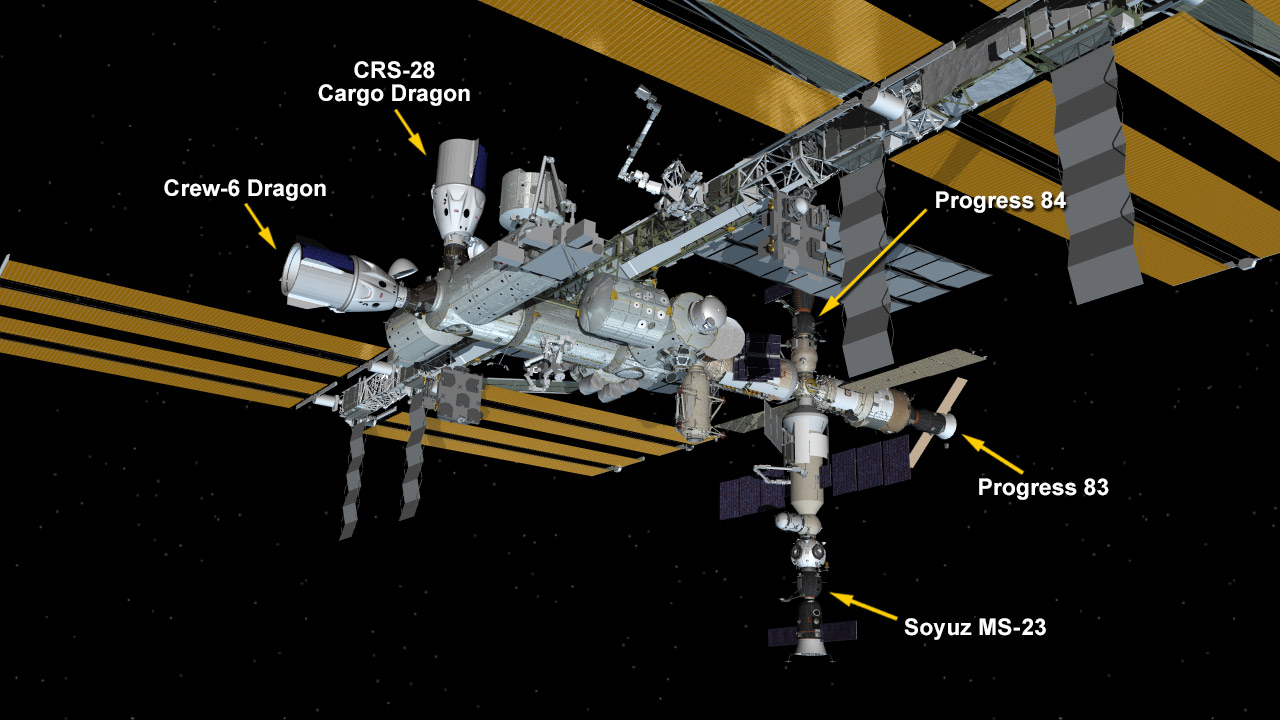
While the International Space Station was traveling approximately 270 miles over the coast of Brazil, a SpaceX Dragon cargo spacecraft autonomously docked to the station’s Harmony module at 5:54 a.m. EDT, with NASA astronaut Woody Hoburg monitoring operations.
The SpaceX Dragon launched as part of the company’s 28th contracted commercial resupply services mission for NASA at 11:47 a.m. EDT, June 5, from Launch Complex 39A at the agency’s Kennedy Space Center in Florida. The Dragon will spend about three weeks attached to the space station before it returns to Earth with cargo and research.
The SpaceX Dragon has delivered a pair of IROSAs (International Space Station Roll Out Solar Arrays) that, once installed, will expand the energy-production capabilities of the microgravity complex.
Among the science experiments Dragon delivered to the space station are:
Thunderstorm Watch
What Happens Above Thunderstorms (Thor-Davis), an investigation from ESA (European Space Agency), observes thunderstorms from the space station. This vantage point allows researchers to see the electrical activity from above, particularly the inception, frequency, and altitude of recently discovered blue discharges. Scientists plan to estimate the energy of these phenomena to determine their effect on the atmosphere. A better understanding of lightning and electrical activity in Earth’s atmosphere could improve atmospheric models and provide a better understanding of Earth’s climate and weather.
Helping Plants Chill in Space
Plants exposed to environmental stress, including spaceflight, undergo changes to adapt, but those changes may not be passed on to the next generation. Plant Habitat-03 (PH-03) assesses whether plants grown in space can transfer such adaptations to the next generation and, if so, whether a change continues through subsequent generations or stabilizes.
The investigation creates a second generation of plants using seeds previously produced in space and returned to Earth. Results could provide insight into how to grow multiple generations of plants to provide food and other services on future space missions. This investigation also could support development of strategies for adapting crops and other economically important plants to marginal and reclaimed habitats on Earth.
Testing a Telomere Technique
Telomeres, genetic structures that protect our chromosomes, shorten with age and wear. But research has shown that telomeres lengthen in space. Genes in Space-10 tests a technique for measuring telomere length in microgravity, where methods typically employed on Earth are difficult to use due to gravity. The experiment explores whether telomere lengthening in space is caused by proliferation of stem cells — undifferentiated cells that give rise to specific body components and that typically have long telomeres.
Understanding the mechanism behind telomere lengthening could reveal possible effects on astronaut health during long-duration missions. Results also could lay the groundwork for a variety of related research to benefit future space travel and people on the ground.
Genes in Space is a national contest for students in grades 7 through 12 to design biotechnology experiments for space. The program is sponsored by miniPCR, Math for America, Boeing, New England Biolabs Ltd., and the ISS National Laboratory.
Thawing Ice, Solar Storms, and Attitude Recovery
Mission 26 for the station’s Nanoracks CubeSat Deployer (NRCSD) includes Educational Space Science and Engineering CubeSat Experiment Mission (ESSENCE), sponsored by the ISS National Laboratory and developed by universities in Canada and Australia. It carries a wide-angle camera to monitor thawing of ice and permafrost in the Canadian Arctic, which could provide a better understanding of the effects on Earth’s climate and support better local infrastructure planning.
The satellite also carries a solar energetic proton detector to collect data on periods of solar activity that emit highly energized radioactive protons that can damage the structure and electronic components of spacecraft. Understanding these effects could help make future CubeSats more resistant to radiation. In addition, the investigation demonstrates a novel method to recover control of a satellite’s attitude, or orientation, if a control mechanism fails. ESSENCE is part of the Canadian CubeSat Project, led by CSA (Canadian Space Agency).
Watching Cosmic Weathering
Iris, sponsored by the ISS National Laboratory, observes weathering of geological samples exposed to direct solar and background cosmic radiation and determines whether changes are visually detectable. The investigation also demonstrates experimental sun sensors, torque rods (which provide attitude control and detumbling for satellites), and a battery heater. A collaboration between graduate, undergraduate, and middle school students in Canada, the project provides hands-on experience that promotes interest in science, technology, engineering, and mathematics studies and careers.
These are just a few of the hundreds of investigations currently being conducted aboard the orbiting laboratory in the areas of biology and biotechnology, physical sciences, and Earth and space science. Advances in these areas will benefit life on Earth, help keep astronauts healthy during long-duration space travel, and demonstrate technologies for future human and robotic exploration beyond low Earth orbit to the Moon through NASA’s Artemis missions and eventually Mars.
Learn more about station activities by following the space station blog, @space_station and @ISS_Research on Twitter, as well as the ISS Facebook and ISS Instagram accounts.
Get weekly video highlights at: https://roundupreads.jsc.nasa.gov/videoupdate/
Get the latest from NASA delivered every week. Subscribe here: www.nasa.gov/subscribe


